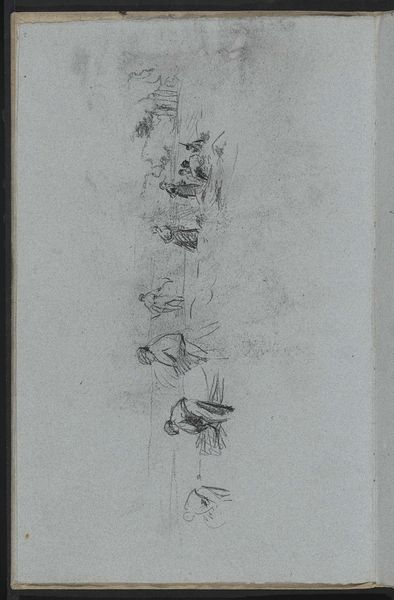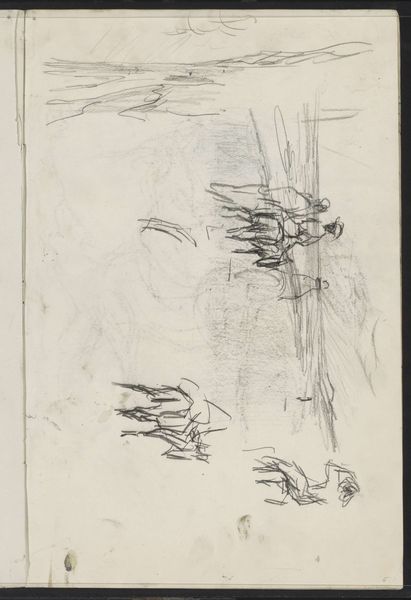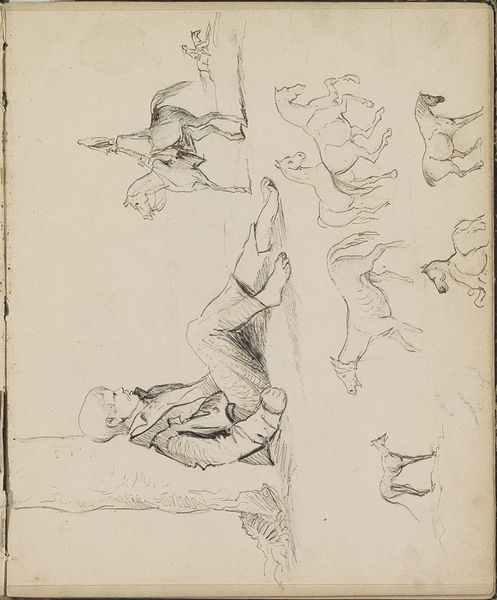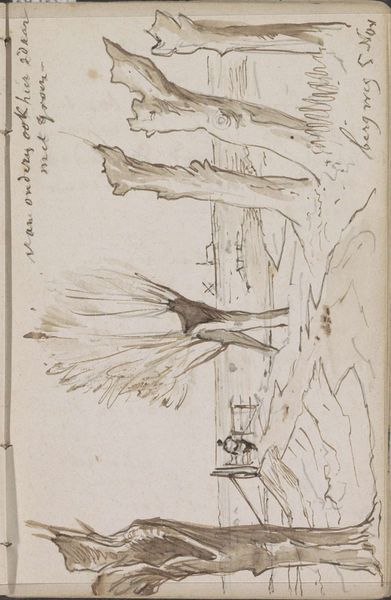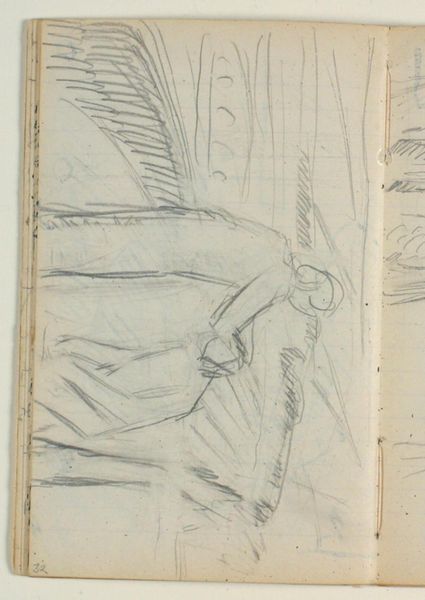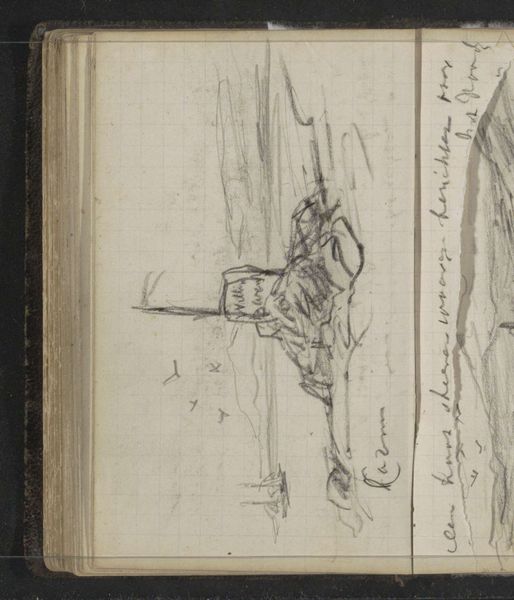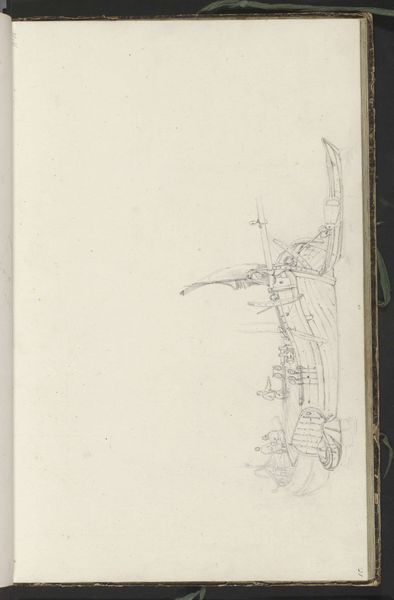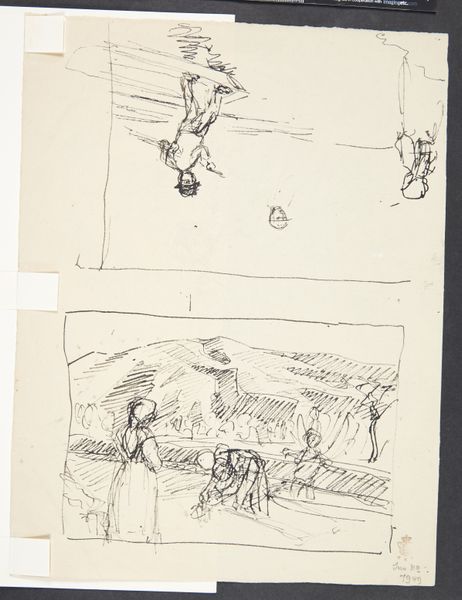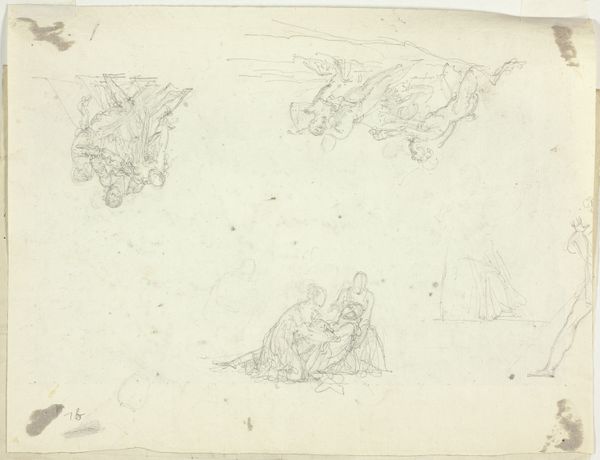
Copyright: Rijks Museum: Open Domain
Curator: We are looking at "Figuren in badkleding op het strand" by Isaac Israels, likely created between 1875 and 1934. It's currently housed at the Rijksmuseum. Editor: The first thing that strikes me is the spontaneity of the sketches. It feels like we're peeking into the artist's private notebook. Curator: Indeed. The medium, likely pencil or pen and ink, lends itself well to this informal, almost diaristic quality. Note how the lines vary in weight and density. Consider the structural elements: the arrangement of figures across the page creates a rhythmic, visual field, don't you think? Editor: Yes, it is rhythmic. To me, the materiality of the sketchbook itself is crucial; the lined paper constrains the figures, suggesting a specific site of production—the artist recording impressions on the go, perhaps documenting leisure or social scenes that provide hints about consumer culture at the time. Curator: Good point. The sketched figures, caught in various poses, exemplify Israels' ability to capture fleeting moments. The loose rendering, a hallmark of Impressionism, avoids rigid form in favor of capturing essence. It invites interpretation rather than dictating it. Editor: I wonder what dictated Israels’ process? Was this sketching directly from life or from memory? This also speaks to broader themes: how are images like this—created possibly in a fleeting moment—preserved, circulated, and then granted value as artworks displayed in a major museum? Curator: That speaks volumes about art-historical practices themselves. Perhaps the fragmented nature of the sketch, far from being a shortcoming, contributes to its modern appeal. What else do you find of particular semiotic significance here? Editor: The lack of finish also highlights the labor involved, even in a quick sketch. It makes the act of creation visible, a deliberate artistic choice to embrace process and documentation over a highly polished presentation, really calling attention to the process of labor. Curator: Fascinating how you've brought that out. Editor: Thinking about this more has really underlined for me that we are invited to consider the sketchbook page as both a record and a site of production, collapsing the distance between process and the finished artifact. Thank you. Curator: A pleasure. A chance to look beyond representation and see a work’s inherent artistic qualities afresh is always welcome.
Comments
No comments
Be the first to comment and join the conversation on the ultimate creative platform.
